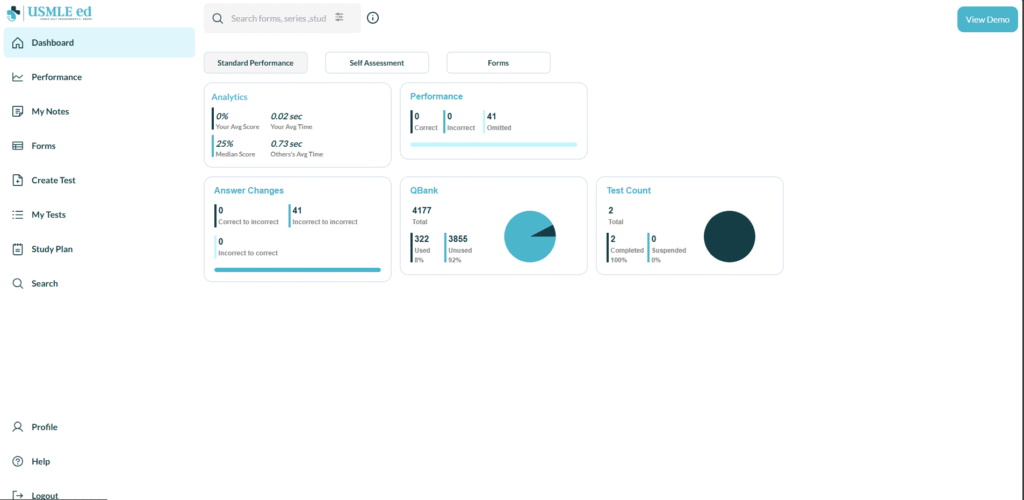If you’re preparing for the USMLE Step 1, choosing the right question bank — or QBank — is one of the most important decisions you’ll make. With so many options on the market, how do you know which QBank for USMLE Step 1 will truly help you succeed?
This blog breaks down everything you need to know to make the best choice for your prep, including question quality, explanations, performance analytics, and more.

Why Your QBank for USMLE Step 1 Matters More Than You Think
QBank for USMLE Step 1 isn’t just about answering practice questions — it’s about training your brain to think like a physician. The right QBank helps you:
- Understand high-yield concepts
- Develop clinical reasoning skills
- Practice time management
- Identify weak areas early
A poorly chosen QBank could waste valuable time and mislead your study path. The good news? A carefully selected QBank will guide you efficiently toward your target score.
What to Look for in a QBank for USMLE Step 1
Before subscribing to any platform, evaluate the following key features.
QBank for USMLE Tip #1: Prioritize High-Quality Questions
The most effective QBank for USMLE Step 1 mimics the actual exam. Look for:
- USMLE-style clinical vignettes
- Integration across basic sciences
- Application-based rather than recall-based questions
- Mix of easy, moderate, and hard-level questions
Ask: “Do these questions feel like the real exam?” If not, keep looking.
QBank for USMLE Tip #2: Thorough and Educational Explanations
Each question should teach you something — not just tell you the right answer. A good QBank for USMLE includes:
- Detailed rationales for all options
- Clear breakdown of pathophysiology and mechanisms
- Visuals like charts, images, or illustrations for better recall
- Links to USMLEed or other resources for further reading
This turns every question into a mini-lesson.
QBank for USMLE Tip #3: Comprehensive Coverage of USMLE Content Outline
Step 1 tests a broad range of basic sciences. Your QBank for USMLE must include:
- Biochemistry, Pharmacology, Pathology, Microbiology
- Physiology, Anatomy, Behavioral Sciences, and Ethics
- Biostatistics and Clinical Reasoning
Use the NBME content outline to cross-check if your QBank aligns with all tested areas.
Smart Features to Consider in a QBank for USMLE Step 1
Technology can take your preparation to the next level — if your QBank has the right tools.
QBank for USMLE Tip #4: Customizable Practice Modes
Choose a QBank that lets you:
- Select specific systems or subjects
- Mix question blocks across topics
- Switch between Tutor Mode and Timed Mode
- Adjust the number of questions per session
Customizing your sessions increases efficiency.
QBank for USMLE Tip #5: Analytics and Performance Tracking
Modern QBanks include dashboards that display:
- Your overall accuracy
- Strengths and weaknesses by system/topic
- Time spent per question
- Percentile rank compared to other users
This data helps fine-tune your study plan and target your weakest areas.
QBank for USMLE Tip #6: Question Review & Bookmarking
A solid QBank for USMLE allows you to:
- Flag questions for review later
- Build a list of challenging questions
- Take notes directly in the platform
- Track your learning curve over time
These features support active recall and spaced repetition.
Bonus Factors That Make a QBank for USMLE Stand Out
Beyond the basics, these extras can give you an edge:
QBank for USMLE Tip #7: Mobile Accessibility
Your study schedule may be unpredictable. A mobile-friendly QBank lets you study:
- During breaks
- While commuting
- In between rotations
Apps with offline functionality are even better.
QBank for USMLE Tip #8: Student Community & Mentorship Access
Some QBank platforms come with:
- Peer discussion forums
- Faculty office hours
- Personalized mentor feedback
These community features can clarify doubts quickly and keep you motivated.
QBank for USMLE Tip #9: Integration with Study Resources
The best QBanks sync with:
- USMLEed for USMLE Step 1
- Flashcard Feature
Integration helps reinforce your learning across platforms.
Top QBank for USMLE Step 1: A Quick Comparison
While we won’t promote one brand over another here, you can consider comparing platforms like:
- UWorld: Known for high-quality clinical-style questions
- AMBOSS: Offers powerful analytics and on-demand explanations
- USMLE-Rx: Integrates closely with First Aid
- USMLEed QBank: Designed with a mentor-first approach for guided learning
Whichever you choose, make sure it fits your learning style and needs.
Final Thoughts: Choose Your QBank for USMLE Wisely
Your QBank for USMLE Step 1 will be the backbone of your study plan. It’s not about finding the flashiest platform — it’s about finding the one that teaches you effectively, adapts to your progress, and mirrors the exam you’ll face on test day.
Invest the time now to evaluate your options and make a strategic decision. The right QBank for USMLE can boost your confidence, sharpen your knowledge, and help you achieve the score you’re aiming for.


Leave a Reply